Olga's Gallery
During the last fortnight we have published the works of Victor
Borisov-Musatov, Russian Impressionist and Symbolist painter, Mstislav
Dobuzhinsky, a Russian artist and illustrator, member of the World
of Art society, Louis Caravaque,
a French artist, and Johann Gottfried
Tannauer, a German artist. The last two artists were both the court
painters of Peter the Great and executed portraits of the tsar and his
family, which we offer to your attention.
Peter the Great
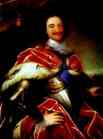 Peter
I, the Great (1672-1725) is the fourth son of the tsar Alexey I Mikhailovitch
by his second wife, Nataly Naryshkina. He was made co-tsar of Russia in
1682 jointly with his sickly half-brother Ivan V (1666-96) after the death
of their elder brother, Fedor III, under the regency of their sister, tsarevna
Sophia Alexeevna.
Peter
I, the Great (1672-1725) is the fourth son of the tsar Alexey I Mikhailovitch
by his second wife, Nataly Naryshkina. He was made co-tsar of Russia in
1682 jointly with his sickly half-brother Ivan V (1666-96) after the death
of their elder brother, Fedor III, under the regency of their sister, tsarevna
Sophia Alexeevna.
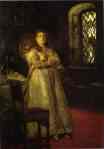 In
his teens, Peter became notorious for his limitless energy, his capacity
for drink, his absorption in military affairs and his coarse contempt for
political and religious ceremony. In 1689, he had Sophia arrested for conspiracy
against himself and immured in a convent (she died in 1704). He ruled with
his weak-willed half-brother as a figurehead. In 1689 he married Evdokia
Lopukhina (1669-1731), the daughter of a boyar, by whom he had a son in
1690, tsarevich Alexey (1690-1718), father of the future tsar Peter II.
In
his teens, Peter became notorious for his limitless energy, his capacity
for drink, his absorption in military affairs and his coarse contempt for
political and religious ceremony. In 1689, he had Sophia arrested for conspiracy
against himself and immured in a convent (she died in 1704). He ruled with
his weak-willed half-brother as a figurehead. In 1689 he married Evdokia
Lopukhina (1669-1731), the daughter of a boyar, by whom he had a son in
1690, tsarevich Alexey (1690-1718), father of the future tsar Peter II.
In 1695, Peter I moved his army against the Turks. The tsar did not command the army, he served as a humble bombardier. In 1696 the Russians captured the vital sea-port of Azov.
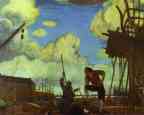 In
1697, Peter I set off on a tour of Europe, traveling incognito in a ‘Grand
Embassy’ whose main official purpose was to secure allies against the Turks.
He spent 16 months traveling through Germany, Holland, England, and Austria,
and worked as a shipwright in Holland and in England. In the course of
the journey he amassed knowledge of western technology and hired thousands
of craftsmen, engineers, military personnel, architects, and painters to
take back to Russia.
In
1697, Peter I set off on a tour of Europe, traveling incognito in a ‘Grand
Embassy’ whose main official purpose was to secure allies against the Turks.
He spent 16 months traveling through Germany, Holland, England, and Austria,
and worked as a shipwright in Holland and in England. In the course of
the journey he amassed knowledge of western technology and hired thousands
of craftsmen, engineers, military personnel, architects, and painters to
take back to Russia.
 In
the summer of 1698, Peter had to return hurriedly to Russia to deal with
a revolt of the streltsy (regiments of musketeers), which was savagely
repressed in the weeks that followed with the help of the Scottish general
Patrick Gordon. The tsarina Evdokia, accused of conspiracy, was divorced
and sent to a convent.
In
the summer of 1698, Peter had to return hurriedly to Russia to deal with
a revolt of the streltsy (regiments of musketeers), which was savagely
repressed in the weeks that followed with the help of the Scottish general
Patrick Gordon. The tsarina Evdokia, accused of conspiracy, was divorced
and sent to a convent.
Peter proceeded to offend many sensibilities by the vigorous adoption of western customs, insisting that beards be shaven at court and that ‘German’ dress be worn. Houses were to be built in a western style; and boyars’ children were to be put in the charge of foreign tutors.
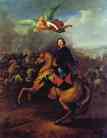
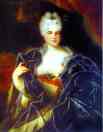 In
1700, in alliance with Denmark and Augustus II the Strong (1670-1733) king
of Poland and elector of Saxony, he launched the Great Northern War against
Sweden (1700-21), but Karl XII of Sweden force-marched his troops in a
pre-emptive strike and routed the Russian forces at Narva in Estonia (1700).
Undaunted, Peter ordered the church bells in Moscow to be melted down to
make cannons, and confiscated ecclesiastical revenues to fuel the war effort.
In
1700, in alliance with Denmark and Augustus II the Strong (1670-1733) king
of Poland and elector of Saxony, he launched the Great Northern War against
Sweden (1700-21), but Karl XII of Sweden force-marched his troops in a
pre-emptive strike and routed the Russian forces at Narva in Estonia (1700).
Undaunted, Peter ordered the church bells in Moscow to be melted down to
make cannons, and confiscated ecclesiastical revenues to fuel the war effort.
In 1703, Peter set about the construction of the new sea-port of St. Petersburg, which was designated as the capital of the empire. In 1709, at the battle of Poltava in the Ukraine, the Swedish army was decisively defeated. By the Peace Treaty of Nystadt in 1721, Sweden ceded to Russia parts of Finland and the provinces of Ingria, Estonia and Latvia.
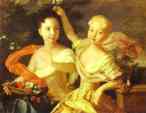 In
1712, Peter married his Lithuanian mistress, Martha Skavronsky (the future
Catherine I), who gave birth to his four children: Anna (1708-1728); Elizabeth
(1709-1761), future Empress Elizabeth I; Peter (1715-1719); and Nataly
(1718-1725).
In
1712, Peter married his Lithuanian mistress, Martha Skavronsky (the future
Catherine I), who gave birth to his four children: Anna (1708-1728); Elizabeth
(1709-1761), future Empress Elizabeth I; Peter (1715-1719); and Nataly
(1718-1725).
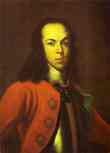 In
1718, Peter's son Alexey, who had wanted to renounce the succession, was
imprisoned for suspected treason and died after torture. In 1722, the Act
of Succession gave the ruling sovereign liberty to choose his successor,
and in the following year Peter had Catherine crowned empress. The move
was unpopular, but at his death Prince Alexander Menshikov (c.1660-1729),
the tzar's principal minister, secured the succession of Catherine I.
In
1718, Peter's son Alexey, who had wanted to renounce the succession, was
imprisoned for suspected treason and died after torture. In 1722, the Act
of Succession gave the ruling sovereign liberty to choose his successor,
and in the following year Peter had Catherine crowned empress. The move
was unpopular, but at his death Prince Alexander Menshikov (c.1660-1729),
the tzar's principal minister, secured the succession of Catherine I.
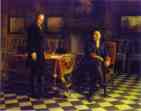 Peter
had achieved during his reign a kind of cultural revolution that made Russia
part of the general European state system for the first time in its history,
and established it as a major power. Still his role in the Russian history
is ambiguous. He strengthened the serfs' slavery, which impaired the industrial
progress in Russia in the following years.
Peter
had achieved during his reign a kind of cultural revolution that made Russia
part of the general European state system for the first time in its history,
and established it as a major power. Still his role in the Russian history
is ambiguous. He strengthened the serfs' slavery, which impaired the industrial
progress in Russia in the following years.
Some Historical Anecdotes about Peter I
Peter I in England
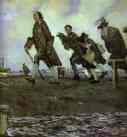 While
in England, Peter I spent most of his time on studying shipbuilding and
navigation. King William III of Orange was very much surprised at such
“un-royal” interests, but nevertheless presented Peter with a yacht and
ordered naval maneuvers in his honor. Peter was so delighted that he said,
“If I were not the Russian tsar, I would have wished to be an English admiral!”
While in Portsmouth, England, Peter wished to see scaffolding, a punishment
for sailors in the English navy. However there was nobody who deserved
such a punishment at the moment. Peter offered any of his own men. The
Brits objected, “Your Majesty! Your people are in England, hence under
protection of the Law.”
While
in England, Peter I spent most of his time on studying shipbuilding and
navigation. King William III of Orange was very much surprised at such
“un-royal” interests, but nevertheless presented Peter with a yacht and
ordered naval maneuvers in his honor. Peter was so delighted that he said,
“If I were not the Russian tsar, I would have wished to be an English admiral!”
While in Portsmouth, England, Peter wished to see scaffolding, a punishment
for sailors in the English navy. However there was nobody who deserved
such a punishment at the moment. Peter offered any of his own men. The
Brits objected, “Your Majesty! Your people are in England, hence under
protection of the Law.”
After the Battle of Poltava
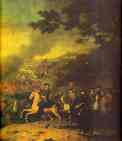 After
the victory over Sweden in the Battle of Poltava Peter I invited the captured
senior Swedish officers to his feast. Peter proposed a toast to “my military
teachers’ health!” Swedish marshal Reinshield asked, who was meant by teachers.
Peter answered that Swedish officers, of course. Than Reinshield said,
“Your Majesty! You are very ungrateful if you treat your teachers so badly.”
Peter I liked Reinshield's answer so much that he returned the marshal
his sword immediately.
After
the victory over Sweden in the Battle of Poltava Peter I invited the captured
senior Swedish officers to his feast. Peter proposed a toast to “my military
teachers’ health!” Swedish marshal Reinshield asked, who was meant by teachers.
Peter answered that Swedish officers, of course. Than Reinshield said,
“Your Majesty! You are very ungrateful if you treat your teachers so badly.”
Peter I liked Reinshield's answer so much that he returned the marshal
his sword immediately.
Peter I and Catherine I
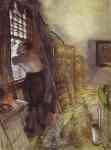 A
servant girl, Martha Scavronsky, made a great career in the Russian court.
In her native Lithuania during the war she was taken by the Russian soldier.
Then she caught the eye of Prince Boris Sheremetyev, who purchased her
for one ruble and made her one of his many mistresses. Prince Alexander
Menshikov, tsar's favorite ‘borrowed’ her for himself. Peter I saw Martha
in Menshikov's house and ordered, “When I go to bed, you, beauty, take
a candle and light the way.” According to the “etiquette” that meant she
was obliged to sleep with the tsar. In the morning Peter paid her with
a copper coin. Peter had granted himself this modest sum for love expenses
when still a young man and all his life he strictly followed the tariff.
Later, though, the tsar married Martha and she became Catherine I.
A
servant girl, Martha Scavronsky, made a great career in the Russian court.
In her native Lithuania during the war she was taken by the Russian soldier.
Then she caught the eye of Prince Boris Sheremetyev, who purchased her
for one ruble and made her one of his many mistresses. Prince Alexander
Menshikov, tsar's favorite ‘borrowed’ her for himself. Peter I saw Martha
in Menshikov's house and ordered, “When I go to bed, you, beauty, take
a candle and light the way.” According to the “etiquette” that meant she
was obliged to sleep with the tsar. In the morning Peter paid her with
a copper coin. Peter had granted himself this modest sum for love expenses
when still a young man and all his life he strictly followed the tariff.
Later, though, the tsar married Martha and she became Catherine I.
The Damage is not Great.
The Frenchman Vilbois was Peter's favorite and aide-de-camp. He was
a drunkard, brawler and womanizer. Once Peter sent this officer with an
errand to Catherine from St. Petersburg to Kronstadt, where the tsarina
lived in winter. While traveling, Vilbois drank a bottle of vodka and came
to the place absolutely drunk. The ladies-in-waiting refused to admit him
to tsarina, saying that Her Majesty was sleeping. “Wake her up immediately!”
roared the officer. The frightened ladies brought him to the tsarina’s
bedroom and left him before her bed for him to wake her up himself. The
drunk officer was so excited by the sleeping woman that he completely forgot
she was the tsarina. Catherine cried for help, but unfortunately it came
too late.
The most interesting part in the story is the reaction of Peter. The
tsar grinned and said, ‘Vilbois, the brute, was drunk and did not understand
what he was doing. I bet, when he is sober he'll not remember anything.”
Peter sentenced the Frenchman for exile for 2 years. However he returned
him in a couple of months with the following excuse: “benefits from his
knowledge and experience considerably exceed the damage he had caused.”
Peter could excuse “accidents”, but never deliberate unfaithfulness.
William Mons, the younger brother of Peter's first official mistress Anna
Mons, became Catherine's lover. When Peter found that out he had the man
beheaded. Then he ordered the head of the unfortunate lover to be put in
a jar with alcohol. The jar stood in Catherine's bedroom till Peter's death.